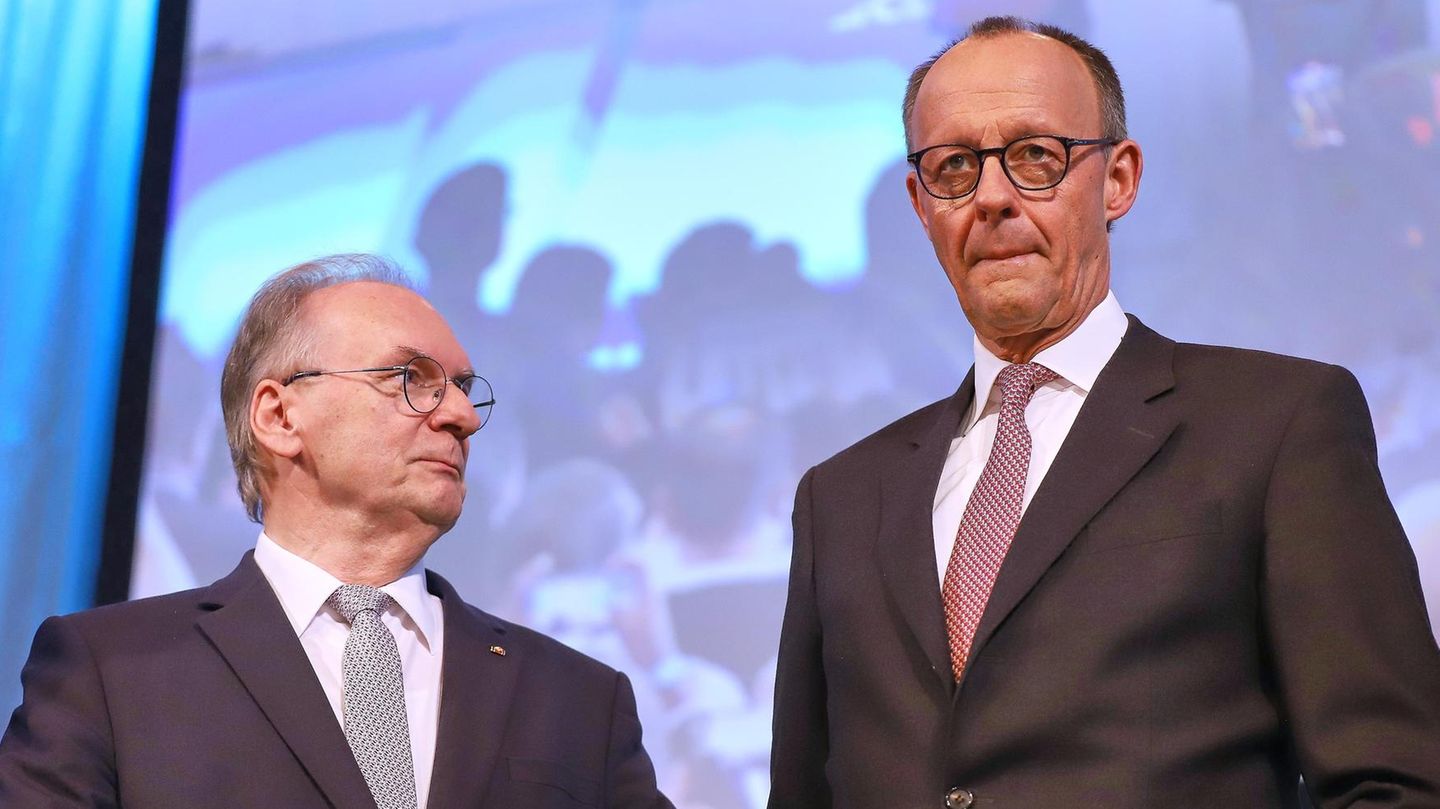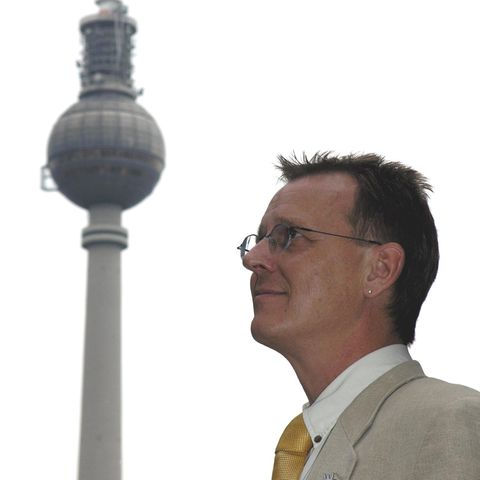analysis
The dangerous east problem of Friedrich Merz
Copy the current link
Add to the memorial list
In the absence of alternatives, East German prime ministers are traded for the federal cabinet. But a move to Berlin could have dangerous consequences – especially for the CDU.
In the formation of government, Friedrich Merz and Lars Klingbeil, the party leader of the CDU and SPD, face many complicated proportional issues. A particularly difficult one is: what to do with the east?
For regulatory reasons, the designated CDU Chancellor and his SPD colleague East Germany would have to take into account appropriately. However, this harbors dangers. This shows an example of two Christian Democrats: Reiner Haseloff and Michael Kretschmer, the heads of government of Saxony-Anhalt and Saxony, both of whom are traded for a cabinet post these days.
Prime Ministers are not a personnel reserve
Example Haseloff: Apart from the fact that he is 71 years old and could quickly run in the capital’s company – it is urgently needed at home. The Magdeburg state parliament will be re -elected in early summer 2026. If Haseloff Saxony-Anhalt, CDU state chief Sven Schulze would have to persuade the coalition partners SPD and FDP to choose him in parliament as head of government. Even if that still worked: Would the widely unknown school exist in the election against the AfD superiority? And what if it went wrong?
The Kolportage looks even more unrealistic than the rumored hazeloff that Saxon Prime Minister Michael Kretschmer could go to Berlin. Yes, he is a federal vice. And yes, he is in the coalition’s central negotiation group.
But Kretschmer was only confirmed as Prime Minister a few weeks ago without a majority in the Dresden state parliament. The repeat of the experiment with another, much more unknown state politician is likely to fail and lead to the new election chaos-or even into a cooperation with right-wing extremists. After all, the AfD is already occupying a third of the Dresden Parliament. Can Merz and the CDU risk that?
The problem would be half as big if there were enough alternatives. But the Tableau of East German Christian Democrats, which impose a cabinet job, is clear. Some younger East German CDU members of the Bundestag are mentioned as potential ministers, including Tino Sorge from Saxony-Anhalt for the Ministry of Health.
But the speculation is not really serious. Philipp Amthor from Mecklenburg-Western Pomerania is seen by many in the party as the next CDU general secretary.
So Merz is in the dilemma: if he brings the most famous East German Christian Democrats to Berlin, he risks the CDU’s loss of power in the countries. If he waives them, the frustration of the East German state associations should continue to grow.
In the SPD, the East German personnel position is similarly precarious. Again, the Ost-Ost representative Carsten Schneider is considered promising. In his over 26 parliamentary years, he was a parliamentary group vice, parliamentary group leader and Minister of State in the Chancellery – and is still not 50.
The problem: he is a man – and male aspirants on the cabinet has more than enough. As early as 2021, the Brandenburg Klara Geywitz was appointed instead of Schneider, which, in many cases, has not proven itself.
Since a new East German SPD woman is being sought, the name of the Schwerin counterpart from Haseloff and Kretschmer, Manuela Schwesig is repeatedly falling. What speaks for the Prime Minister of Mecklenburg-Western Pomerania: she negotiates the coalition as the SPD vice boss. In addition, she gets along well with Klingbeil and was even Federal Minister.
But with Schwesig, the same reservation as with Haseloff applies: in 2026 it also faces a state election that only she can win again against the AfD.
This almost exhausts the federal-ministry Eastern SPD potential. In need, even the Saxon Minister of Social Affairs Petra Köpping and the Saxons-Anhalter state parliamentary group leader Katja Pähle ended up on the Berlin personal bazaar.
When the place of residence decides
Maybe Merz and Klingbeil could escape the Zwickmühle if not the birth principle. According to this logic, for example, the Lower Saxony Bodo Ramelow, who most recently officer for the left as Thuringian Prime Minister, could be declared the only East German representative in the Bundestag Presidium.
And according to this calculation, the SPD-Ost quota would also be fulfilled if the Ministry of Justice fell to the SPD and was filled with Sonja Eichwede. The member of the Bundestag comes from Bremen, but has been living in Brandenburg for almost a decade.
Do the East Germans fall down in the 35th year of reunification? If it would be the case, this would also have to do with their election behavior. Because by far the most East German members of the Bundestag are now in the AfD.
East Germany chose itself to the edge
In the SPD, only about ten percent of the 120 parliamentary group members come from East German state associations. The relation is even lower in the Union faction.
At its conference on its conference this Thursday in Berlin, the Ministerial Conference of East can again demand what it always demands: more representation, more funding, more money. But only a few will listen to her.
The special status that the East has been able to claim for 35 years for settlements and investments has finally been questioned.
Source: Stern
I have been working in the news industry for over 6 years, first as a reporter and now as an editor. I have covered politics extensively, and my work has appeared in major newspapers and online news outlets around the world. In addition to my writing, I also contribute regularly to 24 Hours World.







